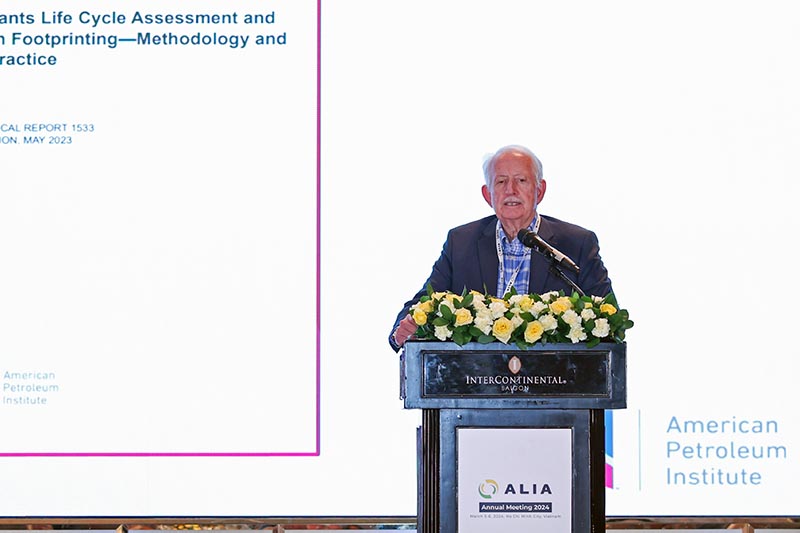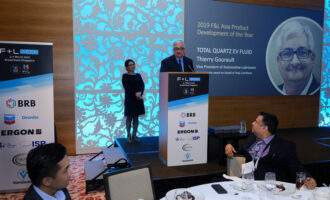
API to create new standard for lubricants’ carbon footprinting
In May 2023, the American Petroleum Institute (API) released the first edition of API Technical Report 1533: Lubricants Life Cycle Assessment and Carbon Footprinting—Methodology and Best Practice, serving as a comprehensive guide for understanding and calculating the carbon footprint of lubricant products. This development coincides with the growing recognition among governments, businesses and individuals of the importance of quantifying and reducing carbon emissions to mitigate climate impacts.
API TR 1533 defines the terminology and industry-specific practices for the life cycle assessment (LCA) of lubricant and specialty products. Harmonisation of LCA and the carbon footprinting of products (CFP) across the lubricant industry offers the clear benefit of enhancing customer confidence in product sustainability claims.
The API framework is based on established global standards ISO 140401/140442 for LCA and ISO 140673 for CFP. Consistency with the International Organization for Standardisation (ISO) criteria enhances the credibility and reliability of API TR 1533.
During the Asian Lubricants Industry Association (ALIA) Annual Meeting, held in Kuala Lumpur, Malaysia, in June 2023, Dennis Bachelder, senior engineer, Engine Oil Licensing and Certification System (EOLCS) at API, indicated that the technical document will continue to evolve, flagging plans to update API TR1533.

At the 2024 ALIA Annual Meeting, Bachelder announced that API is actively working on the update. The 2024 ALIA Annual Meeting was held at the Intercontinental Saigon in Ho Chi Minh City, Vietnam, in March 2024.
Bachelder’s presentation on “Standard Setting for Sustainability and Carbon Footprinting” outlined efforts to transform the API technical report into a full API Standard Recommended Practice, complete with a defined assessment for the CFP of products. This initiative aims to provide lubricant companies with a structured approach to validating their CFP, fostering transparency and accountability in the industry. An auditable method will standardise CFP calculations and provide comparable results for lubricants and other specialties.
Bachelder highlighted several key enhancements in the upcoming version of API TR1533, including an improved reporting template and a concerted effort to increase the quality of LCA data used in CFP calculations.
The new version will introduce reporting on additional CFP abatement measures, a feature absent in the original version. Efforts are being made to introduce new guidance on avoided emissions and to provide further resources regarding the variability of data concerning base oils. Comprehensive waste treatment guidance, with a focus on wastewater and landfill management, will also be incorporated into the API standard.
API plans to improve the chain of custody using a Mass Balance approach to CFP. Mass Balance enables the tracking of sustainable and conventional materials as they move through the supply chain, ensuring the appropriate allocation of material qualities to finished goods.
The system boundaries are consistent with Version 1, with cradle-to-gate; cradle-to-gate plus logistics to customer gate; and cradle-to-grave options. Cradle-to-gate is the first goal, as this is where lubricant manufacturers have the most control, says Bachelder. The temporal scope guidance also remains unchanged, it will be centralised guidance and validity of duration, he says.
Bachelder noted that a committee of subject matter experts is actively working to develop the standard. The API Sustainability Work Group anticipates expanding its membership to include a wider array of subject matter experts to effectively meet these goals, he says. Additionally, Bachelder outlined plans to enhance collaboration with the International Liaison Group, which includes representatives from prominent industry organizations such as ALIA, UEIL and ATIEL. This cooperation aims to foster harmonisation with other standards in development, so everyone is “working together in the same direction.”
During the CFP Workshop, several other methodologies were identified, including the Product Carbon Footprint (PCF) Guideline for the Chemical Industry, published by membership organisation Together for Sustainability (TfS), and the Methodology for Product Carbon Footprint (PCF) Calculations for Lubricants and Other Specialties, jointly developed by ATIEL and UEIL.
ATIEL is the representative body for manufacturers and marketers in the European lubricants industry. UEIL, the Union of the European Lubricants Industry, represents the interests of the lubricants industry in Europe, with a special focus on small and medium enterprises (SMEs) and independent companies that produce lubricants and metal processing fluids essential for the automotive and industrial sectors.
Markus Garb, chairman of the UEIL Sustainability Committee and VP of sustainability at FUCHS SE, outlined the collaborative efforts of UEIL and ATIEL in establishing the methodology. The PCF Methodology relies on the foundational principles of the ISO standards and the Greenhouse Gas (GHG) Protocol Product standard and is tailored to sector-specific needs.

The two organisations initiated the development of the methodology in January 2023. In February, they solidified their collaborative efforts by signing a memorandum of understanding to establish a joint sustainability committee. The PCF methodology was published on October 6, 2023, with the first review published on November 30.
During his presentation, Garb emphasised the significance of developing industry-specific PCF methodologies. ISO standards are not specific to any industry and do not provide sufficient detail while TfS guidelines are tailored to the chemical industry.
Due to the broad nature of the chemical industry, many of these guidelines are not directly applicable to the lubricants industry, says Garb. As a result, there was a need to create a more concise PCF methodology that could be effectively utilised by small- and medium-sized companies within the lubricants sector. Not wanting to reinvent the wheel, Garb indicated that the UEIL/ATIEL approach is compatible with TfS and API.
Garb noted that the handling of biogenic emissions remains controversial. There are two distinct ways to account for such emissions. The UEIL/ATIEL methodology accounts for “Credit for CO2 uptake”, whereas some methodologies claim “Credit for CO2 emissions”. For a cradle-to-grave scope, the PCF is the same for both methods.
However, most PCF methodologies define partial PCFs, cradle-to-gate, says Garb. Mixing methods can result in conflicting outcomes, potentially leading to double counting of biogenic emissions.
UEIL and ATIEL favour the +1/-1 approach as laid out by ISO 14067. Garb highlighted efforts to lobby other industry stakeholders to endorse this methodology exclusively as it is the only procedure to incentivise the increased use of biogenic or bio-based raw materials.
Footnotes:
1 ISO 14040:2006 is part of the ISO 14000 family of standards related to environmental management. Specifically, ISO 14040 focuses on the principles and framework for life cycle assessment (LCA), providing guidelines for conducting and reporting LCA studies. LCA is a methodology for assessing the environmental impacts associated with all the stages of a product’s life from raw material extraction through materials processing, manufacture, distribution, use, repair and maintenance, and disposal or recycling.
ISO 14040 outlines the general principles and requirements for conducting an LCA, including defining the goal and scope of the LCA, the life cycle inventory analysis phase, the life cycle impact assessment phase, and the life cycle interpretation phase. This standard is crucial for organisations looking to evaluate the environmental performance of their products or services comprehensively, enabling them to identify opportunities for improvements and support decision-making processes for sustainability.
2 ISO 14044:2006 is a standard within the ISO 14000 family that specifies requirements and provides guidelines for life cycle assessment (LCA) including the definition of the goal and scope of the LCA, the life cycle inventory analysis (LCI) phase, the life cycle impact assessment (LCIA) phase, the life cycle interpretation phase, reporting and critical review of the LCA, limitations of the LCA, the relationship between the LCA phases, and conditions for use of value choices and optional elements.
ISO 14044 builds on ISO 14040 by offering a more detailed framework and specific guidelines for conducting an LCA. It covers aspects such as how to compile and evaluate the inputs, outputs, and potential environmental impacts of a product system throughout its life cycle. The standard is aimed at supporting organisations in conducting robust and consistent LCAs, thereby facilitating the identification of opportunities for environmental improvement and informed decision-making towards sustainability.
3 ISO 14067:2018 is a standard within the ISO 14000 family focused on quantifying the carbon footprint of products (CFP). It specifies principles, requirements, and guidelines for the quantification and reporting of the carbon footprint of a product (CFP), based on International Standards on life cycle assessment (ISO 14040 and ISO 14044) for the assessment of environmental impacts. ISO 14067 covers the entire life cycle of a product, from raw material acquisition through production, use, end-of-life treatment, recycling, and final disposal.
This standard aims to provide a clear and consistent methodology for calculating the carbon footprint of products, allowing organisations to measure and communicate the greenhouse gas (GHG) emissions related to their products. By doing so, ISO 14067 supports organisations in identifying and implementing opportunities to reduce the carbon footprint of their products, contributing to efforts to mitigate climate change. It also facilitates the comparison of products based on their carbon footprint, promoting transparency and informed choices by consumers and other stakeholders.







